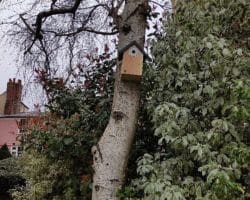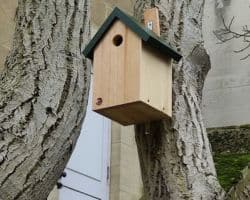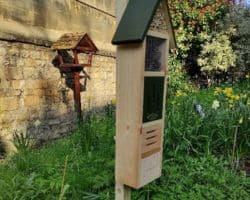The gardens team recently made improvements to the Library churchyard to promote biodiversity and encourage wildlife into the space. The Head Gardener and the Sustainability Officer met with representitives from the Future Nature WTC, who adviced on how best to do this. Some of the suggestions implemented were installing tit boxes and introducing insect habitats through a tower for flying insects and a log pile for ground insects.
Encouraging insects into a garden is an integral part of organic gardening. Ladybirds and lacewings will serve as a natural control of plant eating pests such as aphids and bees and butterflies provide pollination. A wide population of insects also provides food for local birds.
The gardens team have also been adding to the existing planting to provide more diversity to the flora and a later flowering season.
Thank you to Mike Hawkins, Head Gardener, for supplying the images and content for this story.

The entry hole to this nesting box has been reduced to 25mm, allowing smaller birds such as blue tits and coal tits to nest without competition from larger species.

A nesting box with a 32mm opening, ideal for great tits and house sparrows.

This winter flowering witch hazel (Hamamelis mollis) has been added to provide an early source of nectar to pollinators.

A bird table and insect tower have been installed into the wild flower mound. The different sections of the insect tower are designed to provide habitat for; solitary bees, butterflies, ladybirds, lacewings and other flying insects.